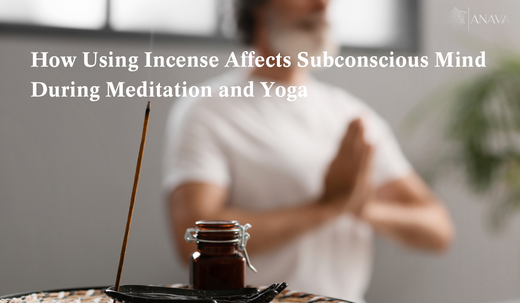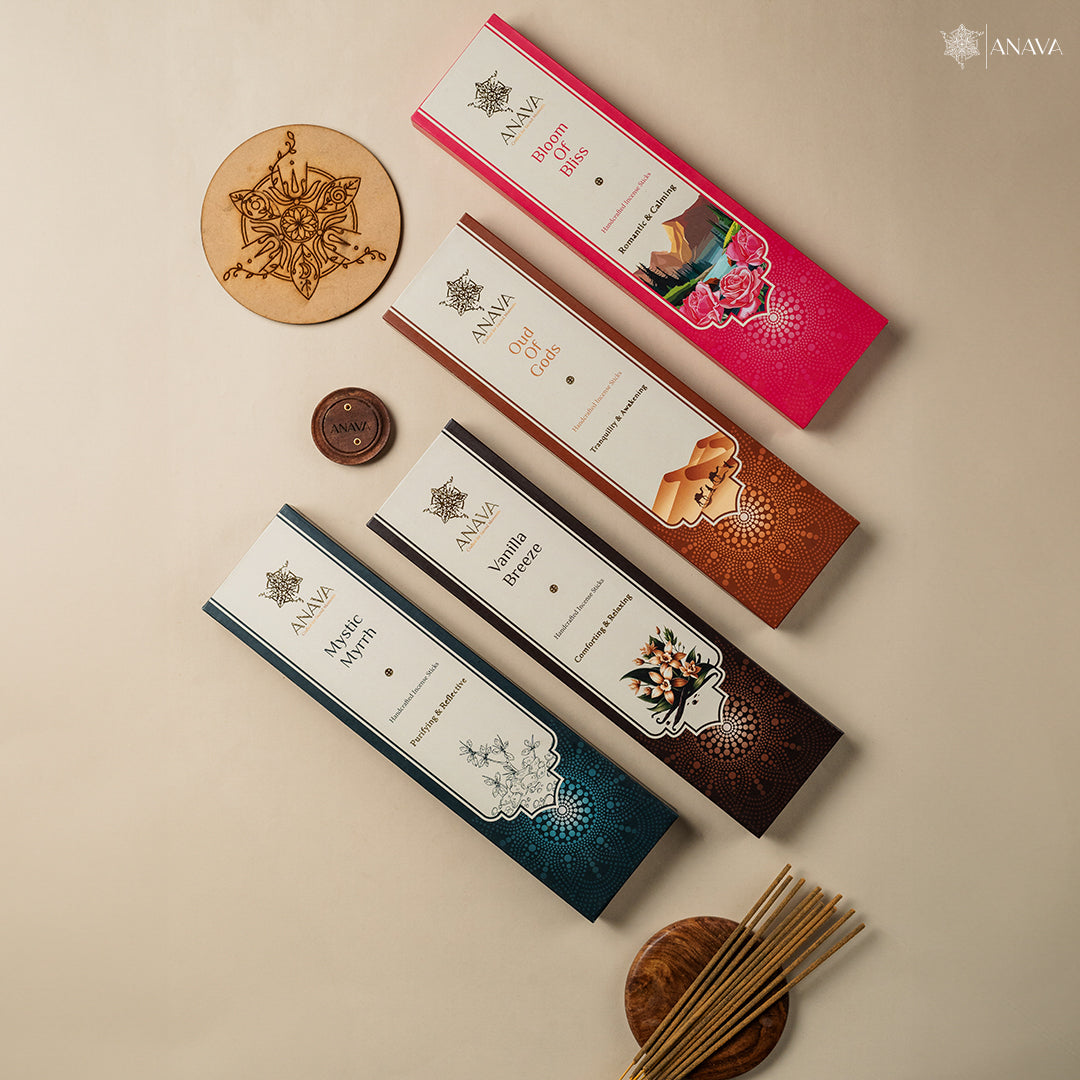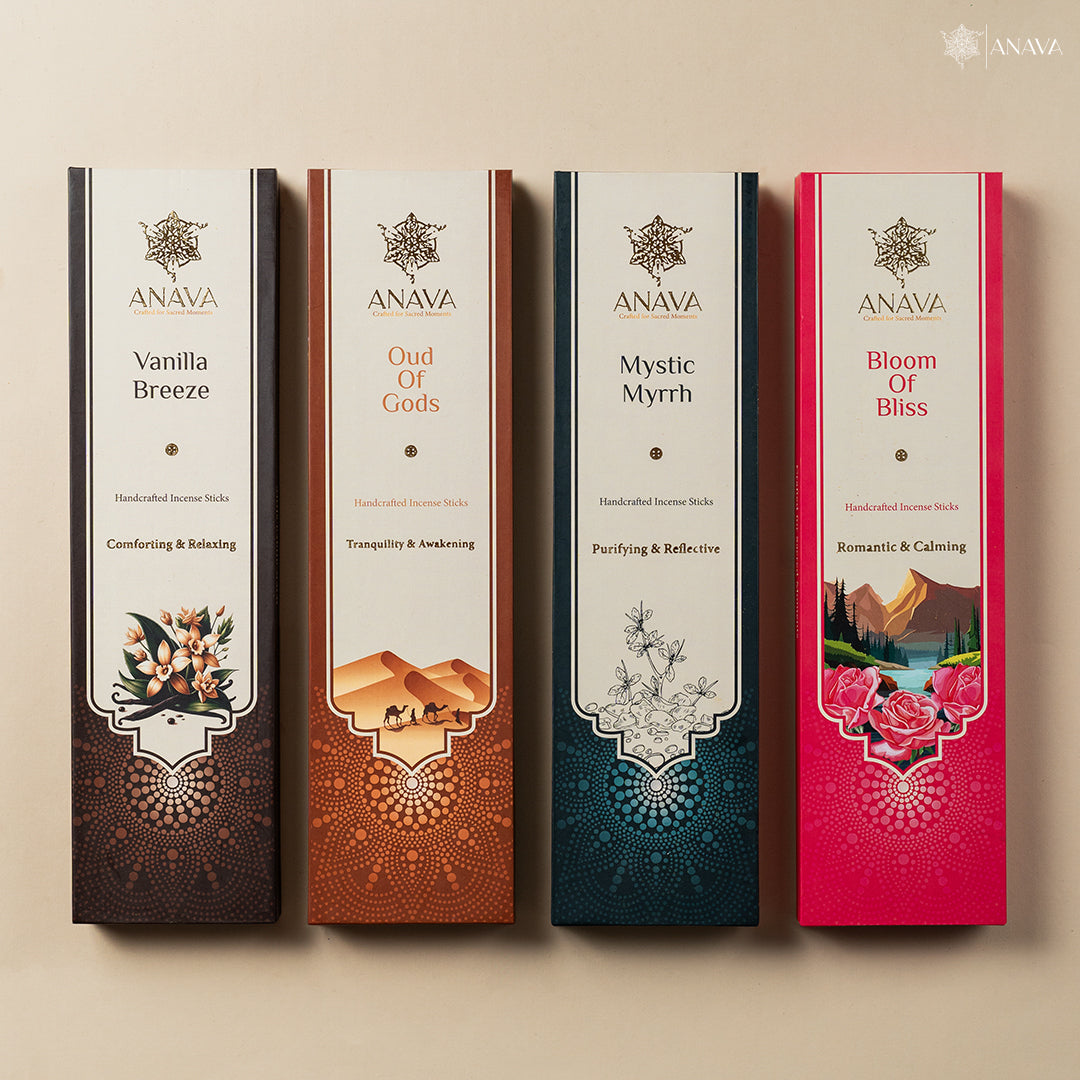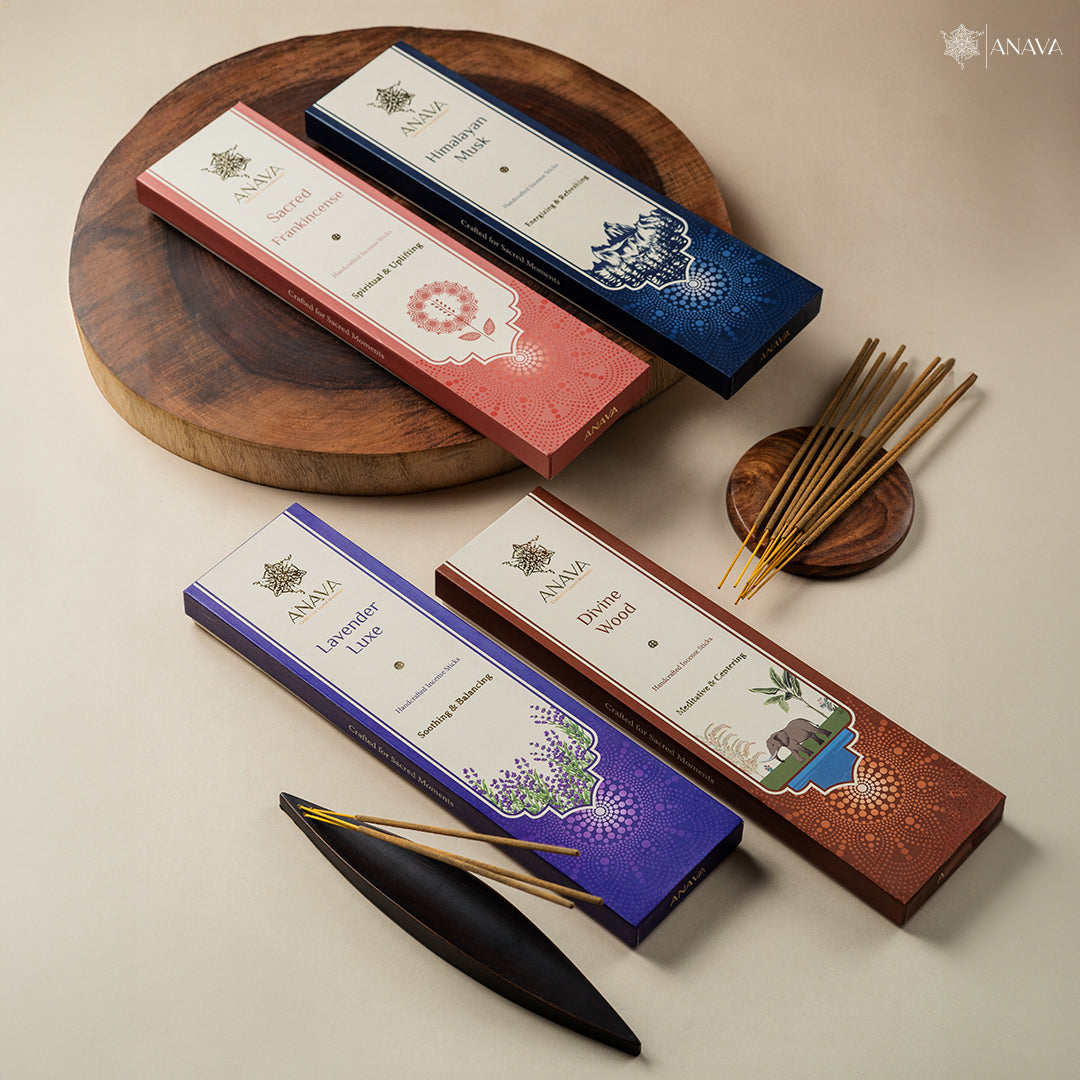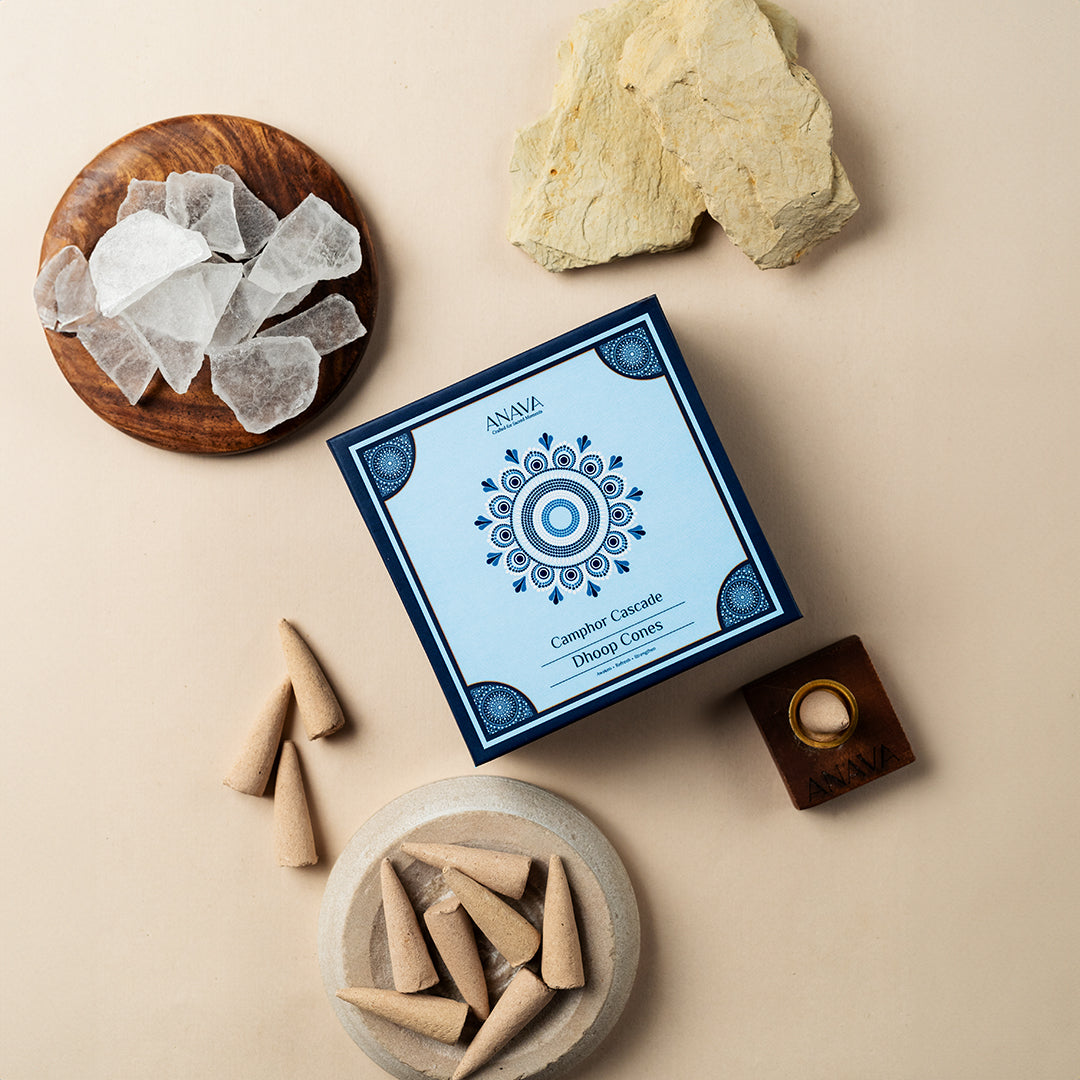Introduction
In today’s stressed-out world, people are looking to calm their nerves down to practise mindfulness but they have no clue what exactly will help them do that and that’s where aromatherapy comes in. It does not require a trip to a spa. It can be done at home.
Aromatherapies are of different types and one of them is Incense aromatherapy which has been used for centuries in various cultures for its therapeutic benefits. The practice involves burning aromatic plant material incense sticks to release fragrant smoke, which promotes relaxation, enhances mood, and purifies the air.
Incense aromatherapy can be used in a variety of settings, including homes, meditation spaces, and places of worship, to create a calming and uplifting atmosphere.
The benefits of incense aromatherapy are wide-ranging and can include stress relief, improved focus, and heightened spiritual experiences. Specific scents, such as lavender for relaxation or sandalwood for grounding, can further enhance the therapeutic effects of incense aromatherapy. The ritual of burning incense can also serve as a form of mindfulness practice, helping individuals centre themselves and connect with the present moment.
In this examination of aromatherapy with incense sticks, we will learn about the ancient principles of scent and its profound influence on our health. Let’s dive into the blog now!

Historical Significance of Incense in Aromatherapy and Spiritual Practices
Incense has held a profound historical significance in both aromatherapy and spiritual practices throughout various cultures and epochs.
Here’s an in-depth look at its historical importance:
Ancient Civilizations
-
Egypt:
- Spiritual Significance: Incense was integral to religious rituals, used to honour gods and purify sacred spaces. Temples often burned frankincense and myrrh as offerings to deities like Ra and Osiris.
- Funerary Practices: Incense played a crucial role in mummification, believed to aid in the soul's journey to the afterlife and protect against evil spirits.
-
Mesopotamia:
- Temple Rituals: Sumerians and Babylonians used incense in temples to create a divine atmosphere and facilitate communication with gods.
- Royalty and Nobility: Incense was a luxury item used by the elite to demonstrate wealth and connect with divine forces.
Eastern Traditions
-
India:
- Vedic Rituals: Incense, known as "dhupa," was used in Vedic rituals to purify the environment and invoke divine presence.
- Ayurveda: In Ayurvedic medicine, incense is used to balance doshas (body energies) and support physical and mental health.
-
China:
- Taoism and Buddhism: Incense has been a vital part of Taoist and Buddhist practices, used in temples and homes to honour deities and ancestors, purify spaces, and aid meditation.
- Traditional Chinese Medicine (TCM): Incense is employed in TCM for its therapeutic properties, enhancing the flow of qi (life force) and promoting health.
Medieval and Renaissance Europe
-
Christianity:
- Liturgical Use: Incense became central to Christian liturgical practices, used during Mass and other ceremonies to create a sense of sacredness and sanctify the church environment.
- Protective Beliefs: During times of plague and disease, incense was believed to purify the air and protect against illness.
-
Alchemy and Medicine:
- Medicinal Exploration: Alchemists and early physicians in the Renaissance explored the properties of aromatic substances, integrating incense into their practices for both spiritual and medicinal purposes.
Modern Times
-
Revival of Aromatherapy:
- 20th Century: The modern practice of aromatherapy emerged, with pioneers like René-Maurice Gattefossé and Jean Valnet recognizing the therapeutic potential of essential oils and aromatic compounds, including those found in incense.
- Holistic Practices: Incense is used in modern aromatherapy to promote relaxation, relieve stress, and enhance mental clarity.
-
Contemporary Spirituality:
- Meditation and Yoga: Incense is widely used in meditation and yoga practices to create a calming atmosphere and support spiritual focus.
- Wellness Rituals: It is valued in holistic healing and wellness rituals for its ability to create a peaceful environment and support emotional and spiritual well-being.
Cultural Symbolism
- Symbol of Purification: Across many cultures, incense symbolizes purification, cleansing spaces of negative energies and preparing them for spiritual activities.
- Connection to the Divine: Incense is seen as a medium that carries prayers and offerings to the gods, creating a bridge between the earthly and the divine.
- Ritual Significance: The act of burning incense is a ritual in itself, signifying devotion, reverence, and the desire to create a sacred space.
Incense Types For Aromatherapy
Here are some common Incense Types For Aromatherapy;
-
Resin Incense
Frankincense:
- Benefits: Calming, grounding, and meditation. It helps reduce stress and anxiety, promotes relaxation, and enhances spiritual connection.
- Uses: Widely used in meditation, prayer, and relaxation practices.
Myrrh:
- Benefits: Purifying, healing, and uplifting. It is known for its antimicrobial properties and ability to promote emotional balance.
- Uses: Common in religious rituals and for creating a tranquil environment.
Copal:
- Benefits: Cleansing, energizing, and protective. It clears negative energy and promotes a sense of peace and clarity.
- Uses: Frequently used in cleansing rituals and spiritual ceremonies.
-
Wood Incense
Sandalwood:
- Benefits: Soothing, centering, and harmonizing. It is effective in reducing anxiety, promoting mental clarity, and enhancing meditation.
- Uses: Popular in yoga and meditation practices, as well as in creating a calming atmosphere.
Cedarwood:
- Benefits: Grounding, calming, and strengthening. It helps alleviate stress, supports respiratory health, and creates a sense of stability.
- Uses: Often used in relaxation and grounding rituals.
-
Herb Incense
Lavender:
- Benefits: Relaxing, calming, and sleep-inducing. It is widely used to reduce anxiety, improve sleep quality, and promote relaxation.
- Uses: Ideal for bedtime routines and stress relief.
Sage:
- Benefits: Cleansing, purifying, and protective. It is known for its ability to clear negative energy and promote mental clarity.
- Uses: Commonly used in smudging ceremonies and energy-cleansing rituals.
-
Floral Incense
Rose:
- Benefits: Uplifting, romantic, and balancing. It promotes feelings of love, compassion, and emotional well-being.
- Uses: Used in love rituals, meditation, and creating a soothing environment.
Jasmine:
- Benefits: Sensual, uplifting, and antidepressant. It helps reduce anxiety, boost mood, and enhance a sense of well-being.
- Uses: Popular in aromatherapy for its uplifting and mood-enhancing properties.
-
Spice Incense
Cinnamon:
- Benefits: Energizing, warming, and stimulating. It helps improve focus, boost energy, and create a sense of warmth and comfort.
- Uses: Ideal for enhancing concentration and creating an inviting atmosphere.
Clove:
- Benefits: Invigorating, antiseptic, and warming. It is known for its ability to relieve stress, enhance mood, and support respiratory health.
- Uses: Often used in rituals for protection and mental clarity.

How to Use Incense In Aromatherapy
Here's a guide on how to use incense in aromatherapy that can be a relaxing and therapeutic practice;
-
Choosing Incense & Preparing Your Space:
- Incense comes in various forms such as sticks, cones, coils, and loose incense. Choose the type that suits your preference.
- Ensure your space is well-ventilated. Incense smoke can be potent, and good airflow helps disperse it evenly.
- Place the incense on a heat-resistant surface away from flammable materials. Use an appropriate incense holder to catch the ash.
2. Lighting the Incense:
- Light the tip of the stick until it catches fire, let it burn for a few seconds, and then blow out the flame. The tip should be glowing red and emitting smoke.
- Light the tip of the cone until it catches fire, let it burn for a few seconds, and then blow out the flame. The top should be glowing and smoking.
3. Mindful Practice:
- Before lighting the incense, set your intention or focus on the desired effect (relaxation, focus, purification, etc.).
- Sit or lie down comfortably. Breathe deeply and allow the scent to fill your senses. Focus on your breath and the aroma.
4. Safety Tips:
- Never leave burning incense unattended. Ensure it's completely extinguished after use.
- Be mindful of any allergies or sensitivities to smoke or specific scents.
- Always ensure proper ventilation to avoid inhaling too much smoke.
Conclusion
From the above paragraphs, we understood that incorporating incense aromatherapy into daily routines can create a sense of ritual and tranquillity, making it easier to navigate the stresses of modern life. Whether used for meditation, to cleanse a space, or simply to create a pleasant atmosphere, the power of incense aromatherapy lies in its ability to engage the senses and promote a holistic sense of health and harmony.
As you explore the world of incense aromatherapy, remember to choose high-quality, natural incense to maximize the benefits and avoid any potential health risks. Embrace the ancient wisdom of incense and let its aromatic power transform your environment and elevate your overall well-being.


